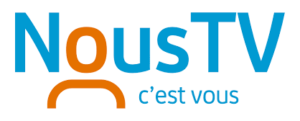The Customer
Patrick Dube and Maxime Noel
Technical Specialists at NousTV
Customer: NousTV
Industry: Broadcasting
Solution: Analysis and Workflow Management / Integrated Management System
Website: https://nous.tv/
The Challenge
- NousTV was using 12 VTR tape decks that they had to manually operate throughout the day. It made their operations tedious and cumbersome.
- Their broadcast equipment was dispersed among 15 tv stations throughout Quebec. It made it difficult to operate and support the systems in a consistent and efficient manner. In other words, they were manually broadcasting for each of their networks.
- The managerial staff was creating playlists for tv guides and CRTC reports using an excel spreadsheet. These reports took numerous hours to generate each week.
- They had operational challenges to sort out due to members of the staff going on retirement that performed functions that were integral to the workflow and difficult to replicate with new staff.
The Solution
MaestroVision implemented its improved workflow to NousTV through several initiatives:
- Moving from a VTR to a tapeless/file-based workflow and playout – upgrading to SDI video servers, introducing a media asset manager to store and manage files, and adding a traffic console to export the workflow to scheduling.
- Centralizing all servers and equipment to their Trois-Riveres location so they are stored in a controlled environment (single data center).
- Obtaining a traffic system and MAM to automate their reports – instead of manually generating playlists and compliance reports, a traffic system allowed NousTV to export various file formats to send to the cable company (for the tv guide, website, etc.) and a new MAM to export and format their asrunlogs; thereby demonstrating CRTC compliance.
The Results
Once MaestroVision’s new workflow initiatives were implemented, NousTV received various benefits including:
- Workforce efficiencies – NousTV was able to address the workforce shortage issue they were facing by scaling back the number of needed employees from 10 operators to just 3 once all of their equipment was centralized. Time was saved performing maintenance and repairs when the broadcast engineers didn’t have to travel from station to station.
- Time saved- the time spent manually generating reports is now put to better use like how to improve their on-air image and ensure the station is in compliance with the CRTC.
- Consistency – each station was visited, surveyed, analyzed in order to provide a new, unified workflow that would reduce bottlenecks and increase communication between stations.




